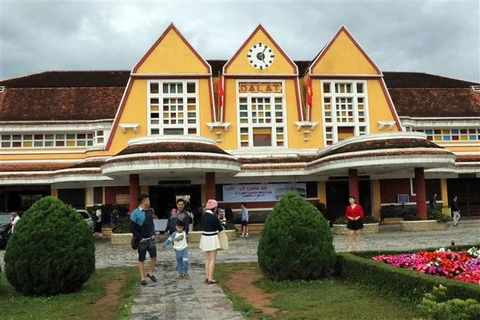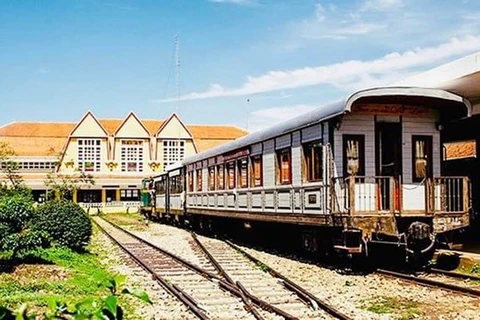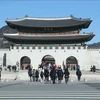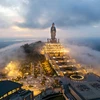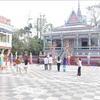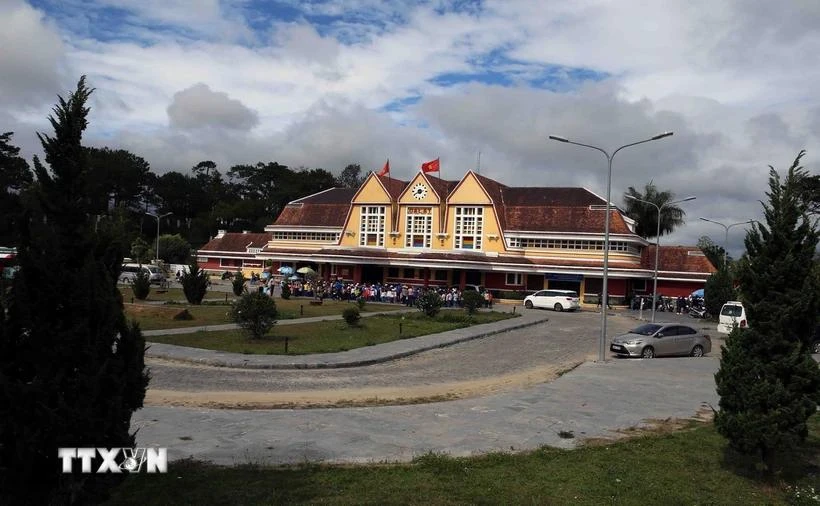
Hanoi (VNA) – With its unique historical and architectural values unparalleled in Indochina, the Da Lat Railway Station is a must-visit destination for tourists traveling to the resort city in the Central Highlands province of Lam Dong.
It is the only one of its kind in the Central Highlands region, considered the most picturesque railway station in Vietnam and Indochina as a whole.
It was a stop on the 84km Phan Rang - Da Lat railway, a route built by the French to connect the Central Highlands with Phan Rang city in the south-central province of Ninh Thuan.
Construction began in 1908 under the order of French Governor-General of Indochina Paul Doumer, and was completed in 1932, coinciding with the construction of the Da Lat Railway Station.

The entire line features 12 stations and five tunnels. This route is particularly notable for its 16km of cogwheel railway that ascends steep slopes, with an average gradient of 12%. At that time, cogwheel railways and locomotives were found only in Switzerland and Vietnam.
The station, designed by two French architects Moncet and Revéron and built between 1932 and 1938, is the most picturesque in Vietnam and the whole of Indochina. Its façade represents the three peaks of Langbiang Mountain and stilt houses in the Central Highlands.
The station features a symmetrical layout, with the central architectural block simulating the three peaks of Langbiang Mountain and the roofs of the traditional long houses of the Central Highlands.
In the centre of the building, on the exterior beneath the roof, there is a large clock commemorating the time Dr. Alexandre Yersin discovered Da Lat.
There are two halls at the front, one for passengers and the other for cargo. Between these two areas is the waiting space for trains. Overall, the building's architecture harmonises with nature and serves as a unique urban landmark.

The Da Lat Railway Station was recognised as a national historical-cultural site in 2001.
To uphold the value of the station, in August 2023, the Lam Dong Provincial People's Committee issued a plan to direct the development of railway transport until 2030, with a vision for 2045. The plan focuses on restoring, upgrading, and effectively utilising the unique Da Lat-Thap Cham cogwheel railway for tourism.
On June 21, 2024, the provincial People's Committee issued Decision No. 1061/QD-UBND, officially recognising the Da Lat Railway Station as a tourist destination managed by the Vietnam Railways Corporation.
As part of the 3rd Lam Dong Tourism Golden Week 2024, a new night tour was launched on June 4, providing a new experience for travelers to gain a better sense of the enchanting beauty of Da Lat at night.
On the nearly 7 km route, tourists can enjoy the night-time scenery of Da Lat and novel services such as a buffet and live music on the two carriages with both classical and modern designs. There is also Wi-Fi access and even wedding services on this route, adding to its attractiveness for visitors.
The Da Lat Station is a unique architectural structure inspired by the surrounding panoramic mountains and the traditional “Rong” house - a variation of stilt houses unique to the Central Highlands in Vietnam.
Trains are scheduled to depart Da Lat Station at 6:15 pm and 8:20 pm and leave Trai Mat Station at 7:15 pm and 9:20 pm. Fares range from 72,000 VND to 100,000 VND (2.9 - 4 USD) each way, according to the VNR.
Da Lat city is surrounded by hills, pine forests, lakes, and waterfalls. Known as the “City of Eternal Spring” for its distinctive temperate climate, it was developed as a resort town by the French in the early 1900s. Many reminders of the colonial heritage remain, creating unique features of the destination./.
